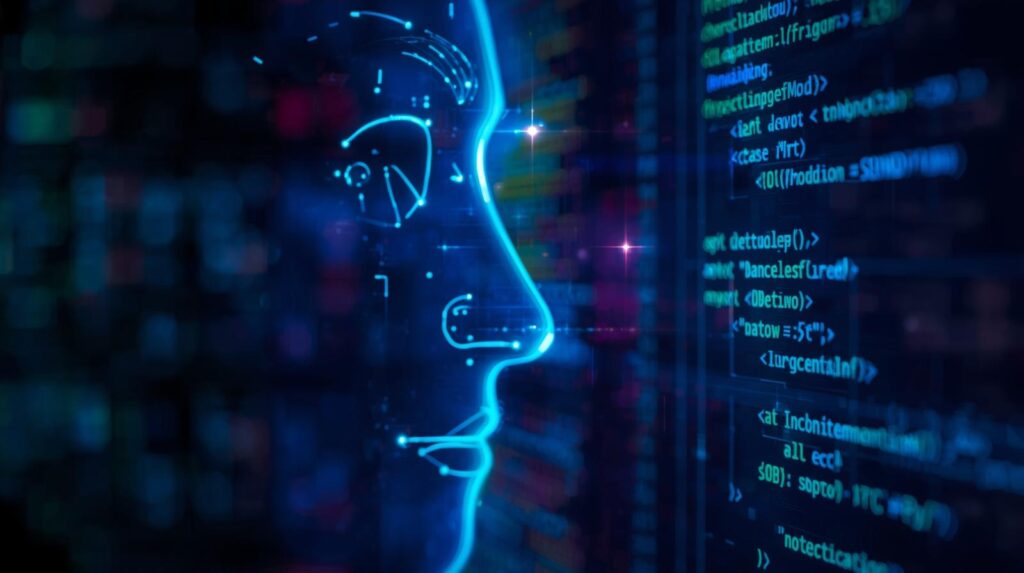Face Recognition Using OpenCV: A Complete Step-by-Step Guide with Python
Introduction
Face recognition has become one of the most exciting applications of computer vision. From unlocking smartphones to verifying identities at airports, face recognition is used everywhere in 2025. One of the most popular libraries for building such systems is OpenCV (Open Source Computer Vision Library).
In this guide, we’ll explore everything you need to know about face recognition using OpenCV. We’ll start from scratch, understand the concepts, implement different methods with Python code, and cover real-world use cases. Whether you’re a beginner or an advanced learner, by the end of this blog, you’ll be able to build your own face recognition system.
What is Face Recognition?
Face recognition is a type of computer vision task where the goal is to identify or verify a person from an image or video. It goes beyond face detection (which only finds faces in an image) and matches them against a database of known individuals.
Difference Between Face Detection and Face Recognition
-
- Face Detection: Identifies where faces are in an image.
-
- Face Recognition: Identifies whose face it is.
Why OpenCV for Face Recognition?
OpenCV is one of the most widely used libraries for computer vision tasks. It supports:
-
- Pre-trained face detection models (Haar Cascades, DNNs).
-
- Easy integration with Python, C++, and Java.
-
- Fast real-time video processing.
-
- Integration with machine learning and deep learning frameworks (TensorFlow, PyTorch, scikit-learn).
Applications of Face Recognition
-
- Security Systems – Face unlock, surveillance.
-
- Attendance Systems – Schools, offices, events.
-
- Authentication – Banking apps, e-commerce.
-
- Smart Devices – IoT, smart homes, personalized ads.
-
- Healthcare – Patient monitoring and access control.
Setting Up Environment
Before coding, install the required libraries.
pip install opencv-python opencv-contrib-python numpy matplotlib
-
- opencv-python → For core OpenCV functionality
-
- opencv-contrib-python → Extra modules including face recognition
-
- numpy → Array operations
-
- matplotlib → Visualizations
Face Recognition Techniques with OpenCV
We’ll explore multiple approaches, starting from basic to advanced.
Method 1: Face Detection with Haar Cascades
Haar Cascades are one of the oldest and simplest methods in OpenCV for detecting faces.
Step 1: Load the Haar Cascade Classifier
import cv2
# Load pre-trained classifier
face_cascade = cv2.CascadeClassifier(cv2.data.haarcascades + "haarcascade_frontalface_default.xml")
# Load an image
img = cv2.imread("person.jpg")
gray = cv2.cvtColor(img, cv2.COLOR_BGR2GRAY)
# Detect faces
faces = face_cascade.detectMultiScale(gray, scaleFactor=1.1, minNeighbors=5)
for (x, y, w, h) in faces:
cv2.rectangle(img, (x, y), (x+w, y+h), (255, 0, 0), 2)
cv2.imshow("Detected Faces", img)
cv2.waitKey(0)
cv2.destroyAllWindows()


Method 2: Face Recognition with Local Binary Patterns Histograms (LBPH)
LBPH is a classical machine learning-based face recognition algorithm included in OpenCV.
Steps:
-
- Collect face images of individuals.
-
- Train the LBPH face recognizer.
-
- Test recognition on new images.
Code Example:
import cv2
import os
import numpy as np
# Initialize recognizer
recognizer = cv2.face.LBPHFaceRecognizer_create()
# Data preparation
def prepare_training_data(data_folder_path):
dirs = os.listdir(data_folder_path)
faces = []
labels = []
label = 0
for dir_name in dirs:
subject_dir_path = os.path.join(data_folder_path, dir_name)
for image_name in os.listdir(subject_dir_path):
image_path = os.path.join(subject_dir_path, image_name)
image = cv2.imread(image_path, cv2.IMREAD_GRAYSCALE)
face_cascade = cv2.CascadeClassifier(cv2.data.haarcascades + "haarcascade_frontalface_default.xml")
faces_rects = face_cascade.detectMultiScale(image)
for (x, y, w, h) in faces_rects:
faces.append(image[y:y+w, x:x+h])
labels.append(label)
label += 1
return faces, labels
faces, labels = prepare_training_data("training-data")
recognizer.train(faces, np.array(labels))
# Prediction
test_img = cv2.imread("test.jpg", cv2.IMREAD_GRAYSCALE)
label, confidence = recognizer.predict(test_img)
print("Predicted Label:", label, "Confidence:", confidence)


Method 3: Face Recognition with Deep Learning (DNN in OpenCV)
OpenCV provides pre-trained DNN (Deep Neural Network) models for face detection.
Steps:
-
- Load pre-trained Caffe/TensorFlow models.
-
- Detect faces in images or videos.
-
- Use embeddings for recognition.
Code Example:
import cv2
# Load pre-trained DNN face detector
modelFile = "res10_300x300_ssd_iter_140000.caffemodel"
configFile = "deploy.prototxt"
net = cv2.dnn.readNetFromCaffe(configFile, modelFile)
image = cv2.imread("person.jpg")
(h, w) = image.shape[:2]
blob = cv2.dnn.blobFromImage(cv2.resize(image, (300, 300)), 1.0,
(300, 300), (104.0, 177.0, 123.0))
net.setInput(blob)
detections = net.forward()
for i in range(0, detections.shape[2]):
confidence = detections[0, 0, i, 2]
if confidence > 0.5:
box = detections[0, 0, i, 3:7] * np.array([w, h, w, h])
(startX, startY, endX, endY) = box.astype("int")
cv2.rectangle(image, (startX, startY), (endX, endY), (0, 255, 0), 2)
cv2.imshow("DNN Face Detection", image)
cv2.waitKey(0)
cv2.destroyAllWindows()


Method 4: Face Recognition with Deep Learning Embeddings (FaceNet / dlib)
The most accurate approach is to use deep learning-based embeddings (like FaceNet, dlib’s face recognition model).
Steps:
-
- Detect face.
-
- Convert face into 128-d embedding vector.
-
- Compare embeddings using Euclidean distance or cosine similarity.
Library: face_recognition (built on dlib).
import face_recognition
import cv2
# Load known image
known_image = face_recognition.load_image_file("known.jpg")
known_encoding = face_recognition.face_encodings(known_image)[0]
# Load test image
unknown_image = face_recognition.load_image_file("unknown.jpg")
unknown_encoding = face_recognition.face_encodings(unknown_image)[0]
results = face_recognition.compare_faces([known_encoding], unknown_encoding)
print("Is same person?", results[0])


Building a Real-Time Face Recognition System
We can integrate everything into a real-time webcam face recognition system.
import cv2
import face_recognition
# Load known image
known_image = face_recognition.load_image_file("known.jpg")
known_encoding = face_recognition.face_encodings(known_image)[0]
video_capture = cv2.VideoCapture(0)
while True:
ret, frame = video_capture.read()
rgb_frame = frame[:, :, ::-1]
face_locations = face_recognition.face_locations(rgb_frame)
face_encodings = face_recognition.face_encodings(rgb_frame, face_locations)
for (top, right, bottom, left), face_encoding in zip(face_locations, face_encodings):
matches = face_recognition.compare_faces([known_encoding], face_encoding)
name = "Unknown"
if True in matches:
name = "Known Person"
cv2.rectangle(frame, (left, top), (right, bottom), (0, 255, 0), 2)
cv2.putText(frame, name, (left, top - 10), cv2.FONT_HERSHEY_SIMPLEX, 0.9, (0,255,0), 2)
cv2.imshow("Video", frame)
if cv2.waitKey(1) & 0xFF == ord("q"):
break
video_capture.release()
cv2.destroyAllWindows()
Challenges in Face Recognition
-
- Lighting Variations – Performance drops in low light.
-
- Occlusion – Glasses, masks, hats reduce accuracy.
-
- Aging & Expressions – Faces change over time.
-
- Privacy Concerns – Ethical considerations around surveillance.
Best Practices
-
- Use data augmentation for robustness.
-
- Normalize and align faces before recognition.
-
- Use GPU acceleration for real-time performance.
-
- Consider ethical implications before deployment.
Where to Find Face Datasets
-
- LFW (Labeled Faces in the Wild) → http://vis-www.cs.umass.edu/lfw/
-
- CelebA Dataset → Large-scale celebrity dataset.
-
- MS-Celeb-1M → Microsoft large-scale dataset.
-
- Kaggle Datasets → Tons of open datasets.
Conclusion
Face recognition using OpenCV is a fascinating project that combines computer vision, machine learning, and deep learning.
We explored:
-
- Haar Cascades for basic detection.
-
- LBPH for classical recognition.
-
- OpenCV DNN for deep learning-based detection.
-
- Face embeddings (dlib/FaceNet) for high-accuracy recognition.
-
- Real-time webcam implementation.
By practicing these techniques, you can build your own face recognition projects for security, authentication, or fun experiments.
FAQs
Q1. Can I use OpenCV alone for face recognition?
Yes, but for high accuracy, combining OpenCV with deep learning libraries is better.
Q2. Is face recognition using OpenCV free?
Yes, OpenCV is open-source.
Q3. Can I run this on a normal laptop?
Yes, basic methods run fine. Deep learning models may need GPU for speed.
Q4. What are alternatives to OpenCV?
Dlib, TensorFlow, PyTorch, Mediapipe.


